The spinal muscles and ligaments work in conjunction to help support the spine, maintain an upright posture, and control movements during activity and rest. The muscles are named based on shape, location, or a combination. Further categorization factors include muscle functions like flexion, extension, or rotation. Skeletal muscle is a form of striated muscle tissue that is voluntarily controlled by the somatic nervous system. Striated means it is striped in appearance. Most skeletal muscles are attached to bones by collagen fibers known as tendons.
| Vertebral Muscle Types | Location |
| Forward flexors | Anterior |
| Lateral flexors | Lateral |
| Rotators | Lateral |
| Extensors | Posterior |
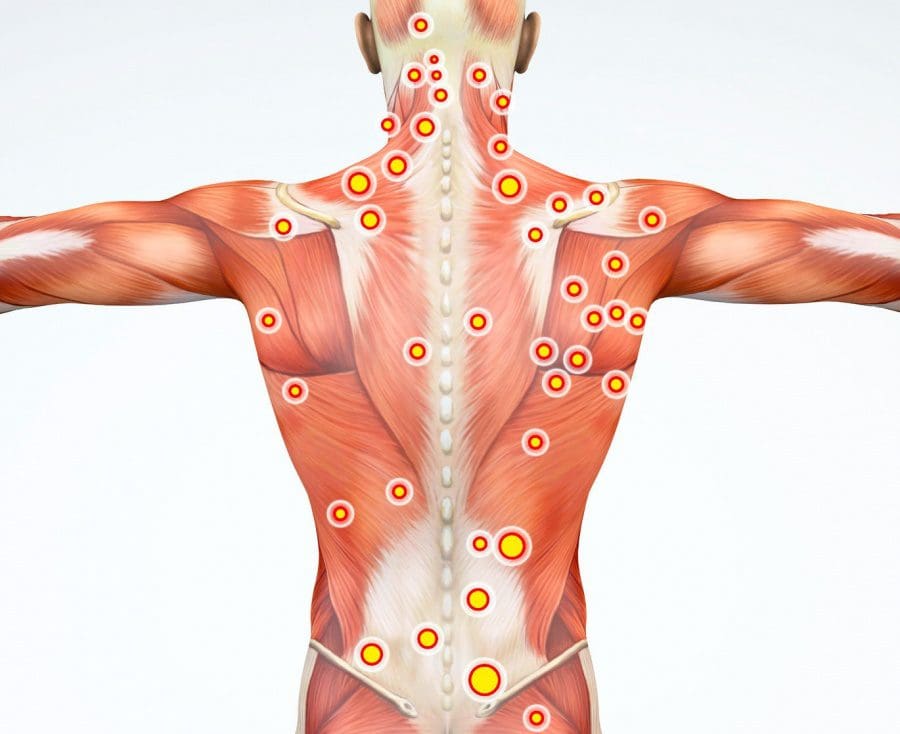
It has the fastest contraction rate of all muscles. Before muscle/s contract, a nerve impulse starts in the brain and runs through the spinal cord to the muscle. For the muscles to contract and work properly they need energy/fuel. Mitochondria produce Adenosine triphosphate chemical cells that are needed for energy. Adenosine triphosphate is made as the mitochondria burn glucose or sugar. The blood vessels deliver the oxygen and nutrients that the mitochondria need to maintain a steady supply of adenosine triphosphate.
The Posterior Cervical and Upper Thoracic Spinal Muscles
- Semispinalis Capitus - controls the head rotation and backward pulls
- Iliocostalis Cervicis - extends the cervical vertebrae
- The Longissimus Cervicus - extends the cervical vertebrae
- Longissimus Capitus - controls the head's rotation and backward pulls
- Longissimus Thoracis - controls the extension/lateral flexion of the vertebral column and rib rotation
- Iliocostalis Thoracis - controls the extension/lateral flexion of the vertebral column and rib rotation
- Semispinalis Thoracis - extends and rotates the vertebral column
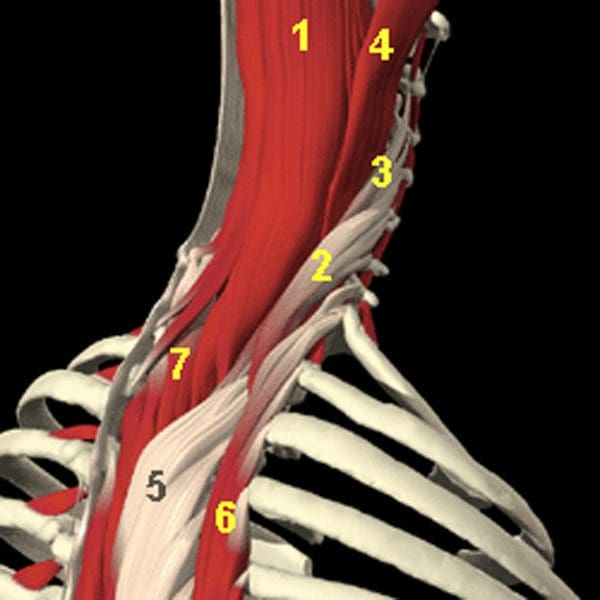
Muscles of the Spinal Column
Cervical muscles
| Cervical Muscles | Function | Nerve |
| Sternocleidomastoid | Extends and rotates the head and flexes the vertebral column | C2, C3 |
| Scalenus | Flexes and rotates the neck | Lower cervical |
| Spinalis Cervicis | Extends and rotates the head | Middle/lower cervical |
| Spinalis Capitus | Extends and rotates the head | Middle/lower cervical |
| Semispinalis Cervicis | Extends and rotates the vertebral column | Middle/lower cervical |
| Semispinalis Capitus | Rotates the head and pulls backward | C1-C5 |
| Splenius Cervicis | Extends the vertebral column | Middle/lower cervical |
| Longus Colli Cervicis | Flexes the cervical vertebrae | C2-C7 |
| Longus Capitus | Flexes the head | C1-C3 |
| Rectus Capitus Anterior | Flexes the head | C2, C3 |
| Rectus Capitus Lateralis | Bends the head laterally | C2, C3 |
| Iliocostalis Cervicis | Extends the cervical vertebrae | Middle/lower cervical |
| Longissimus Cervicis | Extends the cervical vertebrae | Middle/lower cervical |
| Longissimus Capitus | Rotates the head and pulls backward | Middle/lower cervical |
| Rectus Capitus Posterior Major | Extends and rotates the head | Suboccipital |
| Rectus Capitus Posterior Minor | Extends the head | Suboccipital |
| Obliquus Capitus Inferior | Rotates the atlas | Suboccipital |
| Obliquus Capitus Superior | Extends and bends the head laterally | Suboccipital |
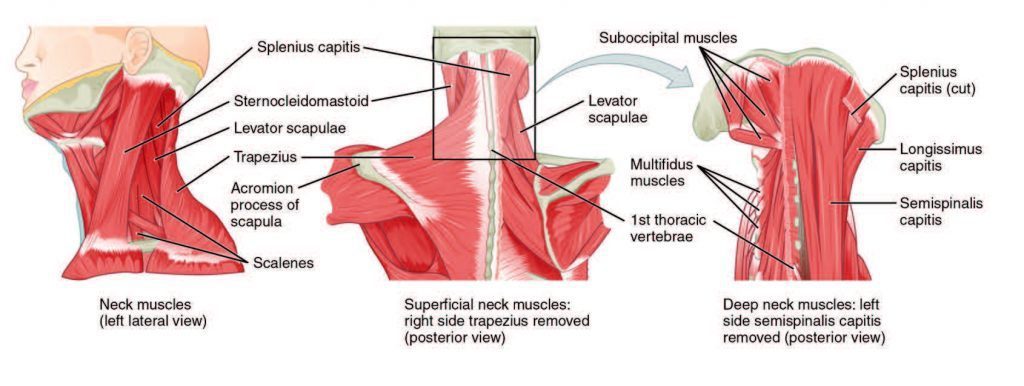
Thoracic Muscles
| Thoracic muscles | Function | Nerve |
| Longissimus Thoracis | Extension, lateral flexion of the vertebral column, and rib rotation | Dorsal primary divisions of the spinal nerves |
| Iliocostalis Thoracis | Extension, lateral flexion of the vertebral column, and rib rotation | Dorsal primary divisions of the spinal nerves |
| Spinalis Thoracis | Extends the vertebral column | Dorsal primary divisions of the spinal nerves |
| Semispinalis Thoracis | Extends and rotates the vertebral column | Dorsal primary divisions of the spinal nerves |
| Rotatores Thoracis | Extends and rotates the vertebral column | Dorsal primary divisions of the spinal nerves |
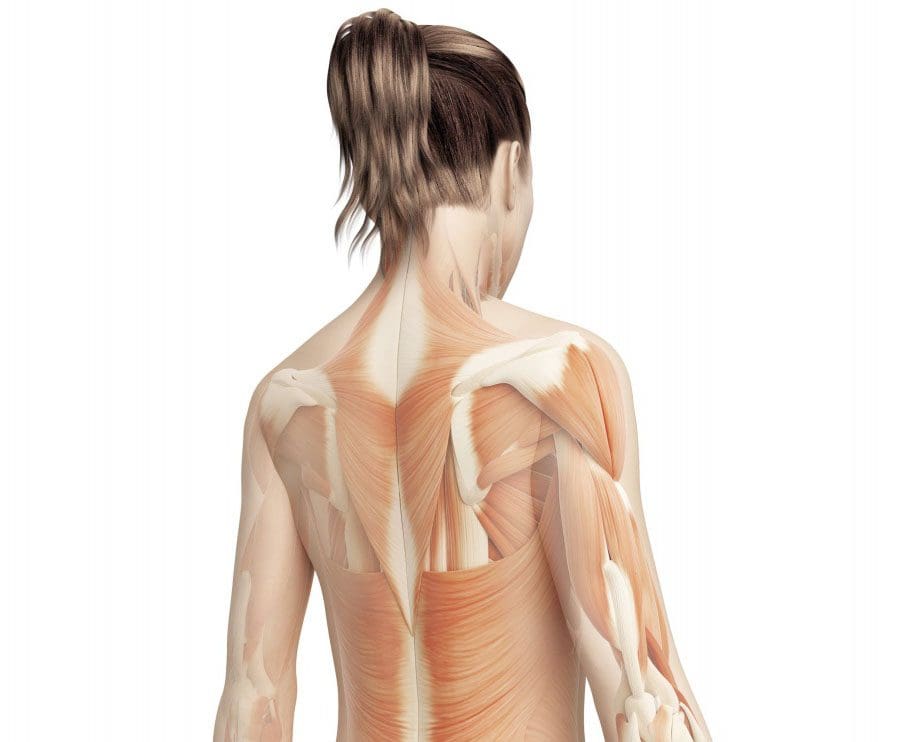
Lumbar muscles
| Lumbar muscles | Function | Nerve |
| Psoas Major | Flexes the thigh at the hip joint and the vertebral column | L2, L3, sometimes L1 or L4 |
| Intertransversarii Lateralis | Lateral flexion of the vertebral column | The ventral primary division of the spinal nerves |
| Quadratus Lumborum | Lateral flexion of the vertebral column | T12, L1 |
| Interspinales | Extends the vertebral column | Dorsal primary divisions of the spinal nerves |
| Intertransversarii Mediales | Lateral flexion of the vertebral column | Dorsal primary divisions of the spinal nerves |
| Multifidus | Extends and rotates the vertebral column | Dorsal primary divisions of the spinal nerves |
| Longissimus Lumborum | Extends and rotates the vertebral column | Dorsal primary divisions of the spinal nerves |
| Iliocostalis Lumborum | Extension, lateral flexion of the vertebral column, and rib rotation | Dorsal primary divisions of the spinal nerves |
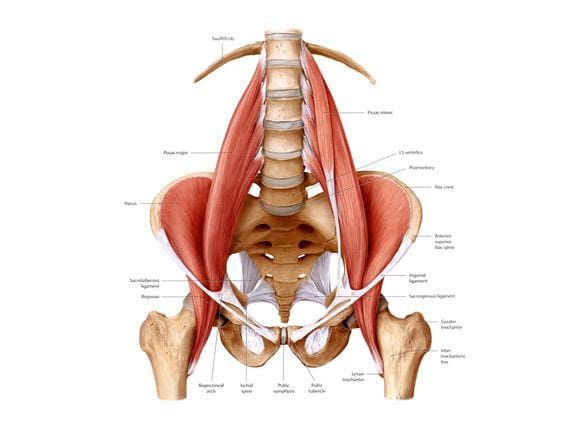
Muscle Fascia Fibrous Tissue
- Fascia is the thickened connective tissue that surrounds a muscle or muscle group. Superficial fascia is directly under the skin.
- Epimysium surrounds the skeletal muscle.
- Perimysium is the sheath that groups the muscle fibers into bundles.
- Endomysium is another type of connective tissue that sheaths each muscle fiber.
The cause of back pain and spinal muscle spasm/s can be caused by overuse, automobile accident, personal, work, or sports injury. The root cause of muscle spasm/s is usually a consequence of an injury to a structure within the lumbar spine. If there have been one or more episodes of muscle spasm in the low back, chances are it will re-occur. The muscles in the low back work together with the abdominal muscles. The spinal muscles add stability by maintaining an erect spine and maintain balance.
Back Pain Specialist
Dr. Alex Jimenez’s Blog Post Disclaimer
The scope of our information is limited to chiropractic, musculoskeletal, physical medicines, wellness, and sensitive health issues and/or functional medicine articles, topics, and discussions. We use functional health & wellness protocols to treat and support care for injuries or disorders of the musculoskeletal system. Our posts, topics, subjects, and insights cover clinical matters, issues, and topics that relate and support directly or indirectly our clinical scope of practice.*
Our office has made a reasonable attempt to provide supportive citations and has identified the relevant research study or studies supporting our posts. We also make copies of supporting research studies available to the board and or the public upon request. We understand that we cover matters that require an additional explanation as to how it may assist in a particular care plan or treatment protocol; therefore, to further discuss the subject matter above, please feel free to ask Dr. Alex Jimenez or contact us at 915-850-0900. The provider(s) Licensed in Texas& New Mexico*




